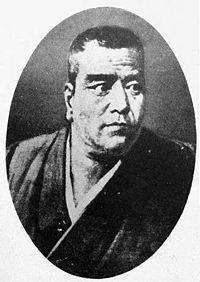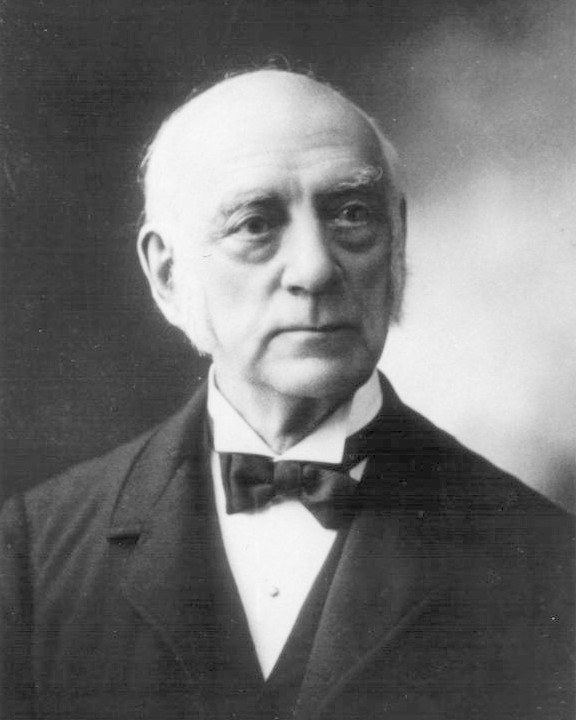 |
| Hannah Riddell |
Introduction
Do you know leprosy? This is the one of infectious and skin diseases. In Meiji period, people considered leprosy to be a fatal disease, because there were no medicines for it. Moreover, this disease has bad effects to a patient’s skin and face. That’s why patients of this disease suffered from disease and discrimination because of their terrible looks and because there were no ways to treat it. However one woman who came from foreign country, England, contributed to help Japanese sufferers. This woman was Hannah Riddell.
Personal History
Riddell was born in London as ordinary family. When she was 20 years old, she established a private school with her mother to make money. At first, the management of school was good and she taught all subjects to students even though she was still twenty, but her mother died in 1886. After that the situation of management gradually went bad. Three years after death of her mother, her father also passed away, and moreover the school was bankrupted. Because of this she had no job, so she became missionary who belonged to one organization, CMS (Church Missionary Society).
When she was 35, she came to Kumamoto in Japan as a missionary. Then, five missionaries were sent to Japan and she was oldest woman of all of them. She saw patients of leprosy there for the first time. She was surprised at such terrible situation for patients. She had been interested in making new organization and was good at making relationship with people of upper class, so she decided to try to establish a hospital called Kaishun hospital for patients of leprosy. However she suffered from financial problem because England couldn't send monetary aid because of the Russo‐Japanese War.
Nonetheless, she succeeded to change situation for the better thanks to a lot of gifts of money and support by upper class people such as Okuma and Shibusawa. She was fond of noble culture and upper class people, so she was able to get help from people who had power in Japan. Owing to this relationship with upper class, she got a chance to spread her idea by making speech in front of upper class and imperial family. She devoted her life to care for lepers.
Summary of discussion
I asked two discussion questions to my group member.
First question was “If you got a disease like leprosy, what do you think and do?” Most members said they wouldn’t want to be alive, if they had leprosy.
Second question was “If you were in her position, do you think you could behave like her and why?. Some of them said “Of course, I would do same thing like her”, and one of them also answered “if I were in strong position, I would help lepers, but in case I were ordinary person, I couldn’t.”. These answers made me know her greatness.
Reflection
I could learn new thing about hidden Japanese history through this presentation because I have never heard and seen the name of her and leprosy in class of high school and junior high school. I also didn’t know many people suffered from leprosy at that time. I feel it would be difficult for me to help other people by devoting my life to them, so she is a great person for me.
References
“Hannah Riddell”, (n.d.). In Wikipedia, accessed January, 2015 http://en.wikipedia.org/wiki/Hannah_Riddell
Social welfare service corporation Riddell Right Home HP, (n.d.). Riddell joshi [Ms Riddell], accessed January 2015
http://www.riddell-wright.com/history_riddell.php
Summary of discussion
I asked two discussion questions to my group member.
First question was “If you got a disease like leprosy, what do you think and do?” Most members said they wouldn’t want to be alive, if they had leprosy.
Second question was “If you were in her position, do you think you could behave like her and why?. Some of them said “Of course, I would do same thing like her”, and one of them also answered “if I were in strong position, I would help lepers, but in case I were ordinary person, I couldn’t.”. These answers made me know her greatness.
Reflection
I could learn new thing about hidden Japanese history through this presentation because I have never heard and seen the name of her and leprosy in class of high school and junior high school. I also didn’t know many people suffered from leprosy at that time. I feel it would be difficult for me to help other people by devoting my life to them, so she is a great person for me.
References
“Hannah Riddell”, (n.d.). In Wikipedia, accessed January, 2015 http://en.wikipedia.org/wiki/Hannah_Riddell
Social welfare service corporation Riddell Right Home HP, (n.d.). Riddell joshi [Ms Riddell], accessed January 2015
http://www.riddell-wright.com/history_riddell.php









